Calendrical/Time
Manipulation
Another subtle yet devastating aspect of the global conspiracy is their
manipulation of calendars, clocks, and our perception of time. We are being
enslaved by manmade mechanisms and systems for keeping time. Not only are we
wage-slaves to bankers, governments, bosses, and landowners, but we are also
time-slaves to our watches, clocks, and calendars. We slave to 95 school and
work days.
We slave to 5 day school and work weeks.
We are spiritual slaves
to Greenwich Mean Time, the Gregorian calendar, and an unnatural 7day week.
“Time is the primary socializing tool and the clock is the key machine of
industrial capitalism. The imperialism of space and material is everywhere
evident, but the imperialism of time is a shadowy beast. What is of direct
concern is how time is perceived, controlled, exploited, manipulated,
institutionalized, and internalized. If we do not understand time, we become
its victims.
One thing remains apparent: time politics are power politics.
Every sundial, water mill, calendar, week cycle, social policy, and temporal
monument has served a particular interest and ideology. The hallmark of
these, of course, has always been technological power and chauvinist
control. In the service of precision, the atomic second is now defined as
the duration of 9,192,631,770 particle oscillations within a cesium 133
atom.”
Buried Inside, Chronoclast (Introduction to Album)
If you follow the
sun and moon to keep track of time instead of clocks and watches, many
things change. If stores open at sunup and close at sundown managers cannot
anally enforce punching time cards. If you tell your friends to meet you at
the river when the sun touches the tree line, you naturally, patiently wait
for them while watching a beautiful sunset.
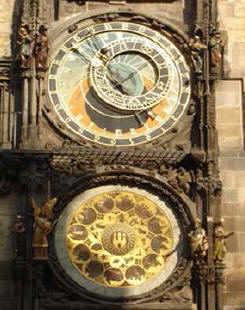 If you tell your friends to meet
you at the mall at 7:30pm, then you must constantly look at your wrist or
the wall watching a series of cumulatively frustrating numbers.
If you tell your friends to meet
you at the mall at 7:30pm, then you must constantly look at your wrist or
the wall watching a series of cumulatively frustrating numbers.
“That [people] can be characterized as wound up, run down, rusty, or going
like clockwork is essentially a product of seventeenth century thought. It
implies not only that their work may be accurately measured, but also that
their motions can be studied. Given proper incentives, they will follow
predetermined and appropriately mechanical patterns”
Samuel L. Macy, “The Dynamics of Progress: Time, Method, and Measure”
When indoctrinated into meaningless calendars (like the Gregorian and
Julian), wristwatches, 95 work days, and 5 day work weeks, people most
certainly do follow predetermined, mathematically calculable patterns and
tendencies.
We like to have a drink after work, we like to watch a movie at
the weekend, we like coffee in the mornings, we buy flowers on Valentine’s
and so on, our tendencies can be calculated and exploited by elites.
Those
who exist outside the constraints of time/wage slavery have all the time and
money they need perform studies, hire psychologists, lobbyists, and
advertisers to further their gains.
Time is money, so they say.
“In hierarchical time culture, status is often delineated in terms of how
valuable a person’s time is. The time poor are made to wait, while the
temporally privileged are waited upon.”
Jeremy Rifkin, “Time Wars”
“Gets us back to the theme of time is money. No wonder time is money is
ingrained into our consciousness and culture. And that seems to be the main
purpose of the calendar we use. To keep track of our accounts, pay our
bills, and set up our appointments. We might not think about it this way,
but the calendar we use programs us to use it the way we do. But are all
calendars like this one, nothing more than an arbitrary program to take care
of business? What about the sun, the moon and the stars? OK. Let’s keep this
one point in mind. A calendar is a programming device. It programs the
culture, the people, the society that uses it. It creates a feedback loop
between the mind of the user and its program. The nature of the calendar
determines the nature of the society.”
Jose Arguelles “Stopping Time” (15)
“Secured at birth and bred as fresh livestock. To the power brokers of hypercapitalism, our lives are on the auction block. Make way for the
experience economy, make way for the access economy, make way for the new
time-currency, welcome it all like the coming of Rome.”
Buried Inside, Chronoclast (IX Time as Commodity)
Karl Marx wrote in “Das Kapital” that,
“To work at a machine, the workman
should be taught form childhood in order that he may learn to adapt his own
movements to the uniform and unceasing motion of an automaton.”
This
statement has been implemented into our government and corporate
institutions in many ways.
Students align themselves with the (approximate)
95, 8 hour work day, 5 days a week. We take this coincidence for granted or
explain it away by the convenience of aligning work and school schedules for
daycare purposes. But in reality what it instills is this psychological
mechanism of slavishly submitting to the regulated schedules of employers. Also the factory like seating and positioning of a boss at the blackboard
giving out standardized directives is a product of the industrial age.
Without this long-term conditioning from a young age would we so willingly
sell our lives for minimum wage?
“We are making the transition into what economists call an experience
economy – a world in which each person’s own life becomes, in effect, a
commercial market. In business circles, the new operative term is the
lifetime value of the customer, the
theoretical measure of how much a human being is worth if every moment of
his or her life were to be commodified in one form or another in the
commercial sphere.”
Jeremy Rifkin, “The Age of Access”
Time has been broken down for us in many ways, some of which make sense and
others which seem senseless. Many delineations of time have astronomical
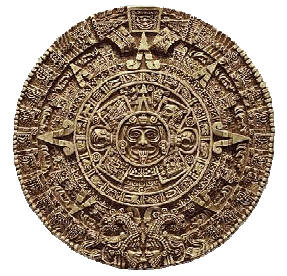 significance which seems sensible. The Sun and Earth’s interaction gives us
a yearly cycle, the Moon’s lunation pattern give
us monthly cycle, the constant rising and falling of Sun and Moon gives us a
daily cycle, and the Moon’s affect on tides gives us a natural quarter day
cycle as the tides come in and out. All other delineations of time, however,
are arbitrary and manmade.
significance which seems sensible. The Sun and Earth’s interaction gives us
a yearly cycle, the Moon’s lunation pattern give
us monthly cycle, the constant rising and falling of Sun and Moon gives us a
daily cycle, and the Moon’s affect on tides gives us a natural quarter day
cycle as the tides come in and out. All other delineations of time, however,
are arbitrary and manmade.
The fast-ticking “second” appears nowhere in
nature, except when people claim it resembles human heartbeat, but this too
is arbitrary because human heartbeat constantly changes pace. The “minute”
named after Min, the Moon is also an invented cycle with no actual parallel
in nature.
The “hour” named after Horus, the Egyptian Jesus, who divides the
days and nights into 12 equal parts, is an ancient myth, but not a cycle
found in nature. The worst and most spiritually enslaving of the created
cycles, however, is undoubtedly the “week.”
Because of this ludicrous
unnatural cycle, almost everyone in the world, no matter what their life was
like the past 7 days, ends up being almost exactly the same the next 7 days!
Every 7 times the Sun rises and falls most of the world’s population hits
the “replay” button on their life
and continues repeating the same pattern/schedule like a skipping record for
their entire existence.
The worst part is that we have been so indoctrinated
into the week (weak) system that every little facet of modern society from
schools, to paychecks, to TV programs, are irreversibly locked in.
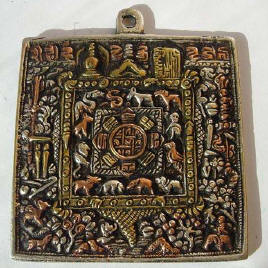
“‘Blue Monday, how I hate blue Monday,’ is how the old Fats Domino song
began.
Why is that? Because, of course, that is the first day of the five
day work week. Fats Domino must have had some clue about time killing us,
otherwise it wouldn’t have to be blue Monday. So Monday through Friday, for
most employed people, as well as schools and public and government
institutions, is the work week. Then comes Saturday and Sunday, the week
end.
The work week is ruled by the clock, which is why it is also referred
to as 9 to 5. So Saturday and Sunday should be soul time. But is it? Well a
little bit. There is Sunday church, maybe an hour or so for the soul. Or
maybe Saturday synagogue. But what is it really about, these weekends? It’s
about killing more time. It’s sports and entertainment. It’s football, and
basketball and baseball. Big time. If you are in the rest of the world it’s
soccer. Very big time. If it weren’t for television, this stuff wouldn’t be
so big.
But it all goes hand in hand. Television, the week end, and big time
sports. It is all a part of the same thing. I know, maybe you don’t do that
. Maybe you do something else. You go skiing or windsurfing. Maybe you go to
the movies. Or you go dancing, or maybe gambling down at the casino. Or you
watch the Discovery channel. Or you take a self-help workshop. It doesn’t
matter, because, then it is going to be Monday again and the whole sequence
repeats.
The point is
your whole show, the time of your life, does reduce down to this weekly
pattern. And it is killing you. You are putting your soul in a seven day
strait jacket. When the soul suffocates you only get more bored and need
more distractions. Do you see what’s going on? You are hardly even alive.
Because it’s your soul that really lives, and if you are not giving your
soul the time it needs, then time is killing you. That means the time of the
calendar and the clock that is embedded in your mind. But you are now
becoming aware of it. That is a great first step. You can now say ‘I admit
that I was powerless over the time I have blindly accepted all of my life.’”
Jose Arguelles, “Stopping Time” (10)
One ancient secret society symbol often
found on clocks and watches is the Anchor. The shape of a typical ship’s
anchor is actually two Egyptian hieroglyphs put together.

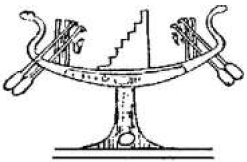
The top part of
the anchor is shaped like a cross with a circle at the top, is the Egyptian
“ankh” hence
the name “anchor.” The bottom
is shaped like the Egyptian boats
of the dead which carried souls during the afterlife.
Two words are
often written under the anchor symbol on clocks as well – “King Time”
– likely signifying the Royal/Brotherhood manipulation of time.
“The calendar year is an imperial narrative. The
seven day week is an
imperial infliction. Circannual holidays are imperial flag-posts.
Mechanical time is an imperial installation. The merchant workday is an
imperial offering. Greenwich Mean Time is an imperial sanction.”
Buried
Inside, Chronoclast (V. Time as Imperialism)
The word "calendar" comes from the Roman/Latin, "calends,” which was the
name of the account book, the book recording monthly debts and bills to be
paid. The first day of each month in the early Christian “Julian” calendar
was called “calends” and that was when you had to paid your bills and debts.
A quick look at the calendar will present some oddities even to the casual
observer. September means seven, but is the ninth month; October means eight
but is the tenth month and so on. March is named for Mars, the Roman God of
War, and July and August are named after Roman Emperors Julius and Augustus
Caesar.
The calendar we use is called the “Gregorian” after Pope Gregory
XIII.
“Yes, before it was known as the Gregorian calendar, it was called the
Julian after Julius himself. Turns out the Romans had a very faulty calendar
of only ten months. And Julius, wanting a way to make a permanent change
from republic to empire, with himself as the first emperor, decided to
change the calendar. So to make the change during the year 4645 BC, Julius
had to have a year 445 days long. Understandably that was known as the ‘year
of confusion.’
Julius didn’t live beyond the ‘ides of March’ of the year 45
BC when he was assassinated for what he had done. But the empire prevailed.
Julius was followed by Augustus Caesar who made a further change in the
calendar. He saw that Julius had changed the name of the month ‘Quintilius’
to Julius (July), so Augustus changed the next month ‘Sextilius’ to Augustus
(August). Not only that, Sextilius only had 30 days, while Julius had 31
days. Augustus wanted to make his renamed month, August, as long as Julius’
month.
So what did he do?
He took the 29th day off February, already the
shortest month, and added it to his month. That is why August, like July has
31 days, and February only 28. So that is how the calendar began. Despotic
motives, imperial pretensions and confusion. The Christians began using the
Julian calendar around 321 AD, when they added the seven day week to it. The
seven day week was borrowed from the Hebrew lunar calendar. The Jews
borrowed the seven day week from the Babylonians.
The seven day week never
correlates perfectly any of the months except when February 1 might fall on
a Sunday, then there will be four perfect seven day weeks in one month.”
Jose Arguelles, “Stopping Time” (17)
The Moon goes around the Earth 13 times
in one year. 13 x 28 = 364 +1 day equals 365 days, one solar year.
The
ancients all used 13 Moon, 28 day calendars and celebrated the extra day
(always on July 25th) as the “day out of time,” when the rising great star
Sirius peaks.
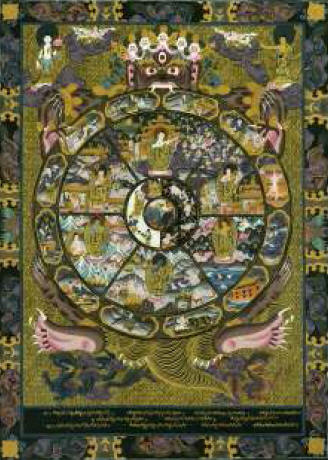
The Druids, Incans, Mayans, Egyptians, Polynesians, Lakota and
many other cultures all used 28day Moon calendars.
“The native peoples of the world who still live by Moon time are far more in
tune with nature because they are operating on the same time-energy flow as
nature. They are in sync with it. But in 1572 Pope Gregory announced that a
new calendar was to be introduced, the Gregorian Calendar, and it was
implemented in October 1582. It was another Brotherhood scam and the
Gregorian Calendar became the fixed standard time for the planet.
This means
that the human mind is tuned to this manufactured flow of ‘time’ when we
look at a clock, a watch, or plan the future with a diary And where is the
centre of this time system, the zero point from which all the world’s people
tune their timepieces? Why, it’s only Greenwich in London, across the River
Thames from the City of London financial district, the Brotherhood’s
operational heartland! And what was the inspiration for the Gregorian
Calendar? The one used
in … Babylon … The Gregorian Calendar is a farce. It is the time equivalent
of throwing all your clothes in a wardrobe and leaning against the door to
stop it flinging open.
The clothes may just about fit in the space if you
push them in hard enough, but what a mess. Here we have a 12 month year of
60 minute hours and 24 hour days with the months so ill-fitting that some are
30 days, others 31, another 28, or 29 every four years. Yes, fits like a
glove. But a sensible measurement of time was not the motivation.
Disconnecting human consciousness from Moon time was the idea and the
Gregorian Calendar removed the 13th Moon.
There should be 13 Moon-cycle
months of 28 days, but instead we have 12 months and 12 Moon cycles. The
Brotherhood hierarchy
still operates their calendars to Moon time another reason for their
obsession with 13”
David Icke, “The Biggest
Secret” (4712)
“On the Gregorian phonograph record, January 1 is part of the program. What
plays on January 1? Well in this country a lot of football ‘bowl games.’
Then at the end of January sometime, you never know exactly when, it is the
Super Bowl. February programs you for Valentine’s day and President’s day.
July for July 4. October for Halloween.
December for Christmas and New
Year’s eve. And so on. Now September 11 911 is part of the program, too.
These are just some of the more obvious examples of how that phonograph
record plays during one spin a year. Every time one of those dates draws
close, whole segments’ of the population respond in pre-established ways.
There are a lot more programs the calendar plays. The beginnings and endings
of wars. Veteran’s day. Memorial day. April fools. Tax day. Labor day.
The
memories of all of these events are accumulated according to the dates in
which they occur. Then everyone has personal dates that trigger their
emotions and memories, too. Like the day you were born. Or the day your son
died. Or when you got married … The Gregorian calendar is arbitrary and
irregular. You would hardly ever think about any natural factors by using
this calendar. January 1 doesn’t correspond to any solstice or equinox or
anything natural at all. With a program like that, of course you wouldn’t
think of the seasons or the moon when you use this calendar. It is almost as
if this calendar is meant to keep you out of phase with nature … It is easy
to overlook an unequal or irregular measure in time because we can’t touch
or see time.
But would we overlook such an uneven standard in a yardstick or
ruler? And if we were to go ahead and try to make or build things with an
uneven ruler, wouldn’t they come out crooked or sloppy? Maybe after awhile
we would say, ‘Oh that’s all right we’ve lowered our standard to accommodate
these sloppy constructions. You’ll get used to it. We’ve always done it this
way.’ But would you really settle for substandard measures of objects and
forms in space?
Yet we put up with substandard and uneven measures in time.
Thinking it doesn’t matter may already be an effect of accepting so long the
uneven measure. If space affects our senses, time affects our mind.
Therefore the effects of a crooked time on the mind may be far more subtle,
yet far worse than the effects of a crooked space on the senses. We could
all develop a crooked mind without even knowing it.
Wouldn’t a crooked mind
see the world in a crooked way and create problems for itself without
knowing it? Not only that, but we would then think all of our problems come
from some place outside of ourselves. We would always be looking for the
problems out there some place.”
Jose Arguelles, “Stopping Time” (16)
“Did you know that the Gregorian calendar repeats its program precisely
every 28 years? In any 28 year slice, there will always be exactly seven
leap days/years. That means there are large 28 year Gregorian recordings
that are playing beneath the surface of events. A significant determining
point will be a good place to begin to look at these 28 year cycles and see
how they are programming us. What is a significant determining point? How
about the atomic bomb in 1945?
Didn’t that change everything? It most
certainly did. Or how about the 911 in 2001? So let’s count in 28 year
cycles after 1945 and see what happens. First 28 years, 1973 now here’s
something: April 4, 1973, the Twin Towers of the World Trade Center in New
York City were dedicated. 28 years later? 2001. 911. No more Twin Towers.
Twin events like Hiroshima and Nagasaki, two 28 year cycles earlier. How
about 28 years before 1945? 1917. America enters World War I. 1945, America
ends World War II. Are we, after the 911, starting World War III? 28 years
before 1917, 1889. Hmm.
The Eiffel Tower, world’s tallest structure in its
time, three 28 year cycles before the Twin Towers. Do you see how the
calendar repeats its programs? Do you really want another 28 years of this
program?”
Jose Arguelles, “Stopping Time”
(18)
The female essence has long been associated with the Moon in large part
because of women’s 28day menstruation cycle. The measure of the Moon from
new Moon to new Moon is called the synodic cycle and is 29.5 days in length.
However the sidereal lunar cycle which measures the Moon from where it
reappears in the same place in the sky is only 27.1 days in length.
So 28
days, already encoded into women’s biological cycles, is the average lunar
cycle. This is not coincidence either, proven by “luminescent ovulation
cycle adjustment,” the patented process whereby using on sleeping women a
series of lights mirroring light cycles of the Moon their ovulation cycles
change (Patent 6497718). Ovulation is about 14 days (half cycle) before
Menstruation.
So in ancient times women the entire world over would usually
have menstruation aligned with the new Moon and ovulation aligned with the
full Moon. It has been shown that 20% more people are admitted into
hospitals and mental health facilities during full Moons. Could humans be
sexually frustrated due to unnatural misalignments in women’s biological
cycles? Is this why lonely dogs howl for companionship during the full Moon?
Ancient societies would often hold monthly fertility ceremonies in honor of
the Moon/femininity but nowadays those who worship the Moon/Lunar cycles are
called lunatics, monsters and nuts. Those who measure time by the Sun/solar
calendars find solace. The etymology again points towards our “illumined”
masters and their Sun worship.
Most girls feel embarrassed or at least inconvenienced by their onset of
womanhood. First periods are accompanied by tampons, pads, teasing
schoolboys and warnings or horror stories from other older women. Zaire
tribes’ people, Native Americans, and other “primitive” cultures honor their
women’s first periods with puberty ceremonies.
They believe each woman has
incredible powers as a spiritual being and the gift of life is an important
event. During her first period each girl is isolated from the tribe and
taken by female relatives and friends to a special “Moon hut” to be taught
about sexuality and childbearing. She is taught arts and crafts, stories are
shared and wisdom is passed down.
After her period of isolation she is
welcomed back with a big feast in her honor. In the ancient world it was
believed that women had amazing powers of healing and creativity during
menstruation so they should not be wasted on everyday tasks. Menstruation
was a time women spent meditating and spiritual searching.
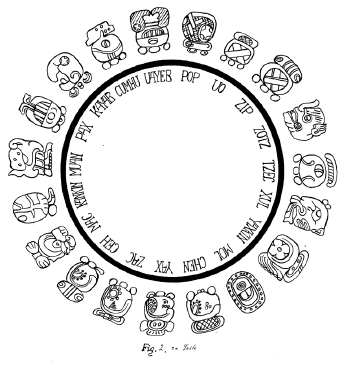
The
ancient Mayan calendar is slightly even more accurate than the Gregorian
calendar we use today. They calculated the moon’s orbit of the Earth
incredibly precisely (29.528395 days to our current 29.530588 day
measurement). They could accurately predict solar and lunar eclipses and had
amazing knowledge of astrology and the stars.
Archeologist Eric Thompson
asks,
“What mental quirks led the Maya intelligentsia to chart the heavens,
yet fail to grasp the principle of the wheel; to visualize eternity, as no
other semi-civilized people has ever done, yet ignore the short step from
corbelled to true arch; to count in millions, yet never to learn to weigh a
sack of corn?”
The Mayan calendar measures cycles of expanding consciousness and completing
one’s purposes in life. Gauging the passing days like this changes the way
one thinks of life. Modern societies tend to see time as a ticking time bomb
till they die, a clockwork of standardized gears cranking until they get
older, rusty, useless and stop turning.
The Mayans, like early Christians,
believed in reincarnation which fits with their calendar. They believed all
of life was a spiritual evolution and an expanding of consciousness/purpose
so each day correlates as such. For instance, as I write this, today is the
second day of the new “Jaguar Moon of Intention” (each Moon has a spirit
animal and purpose). Today’s Tzolkien is “Skywalker” the 13th, which means
“Explore Space, Wakefulness, the Aspiration to Unite Heaven and Earth.”
Today’s Power is “Activation, today’s Action is “Bonding”, and today’s
Essence is “Service.” Each day also has a color, a chakra, and a symbol as
well. Now, this may sound odd or appear as some new age foolishness, but
this is the method of time keeping used all over the ancient world.
To associate the nature of time with the evolution of consciousness seems to
me a much evolved outlook. The Maya knew about the 25,920 year precession of
the equinoxes in which the Earth wobbles slightly for 2160 years past each
constellation of the zodiac.
They even perfectly calculated the end date of
this precession as
December 21st, 2012 when
we will be passing through
galactic center which they referred to as the Dark Rift.
“The Christians set sail westward and ‘discovered’ the New World. In a place
called Yucatan, they discovered another people, the Maya. These Mayans also
had a calendar, ‘a heathen’ device that was more accurate than the Julian
calendar! The Christians learned from the Mayan calendar, that their
calendar was ten days off!
What to do?
The Christians burned all of the
Mayan books in 1562. Interestingly enough, ten years later in 1572, there
was a new pope. He named himself Gregory XIII and declared that his first
act as pope would be to correct the Julian calendar.
Ten years later, 1582.
Pope Gregory XIII had achieved his aim. If you went to bed on the evening of
October 5, 1582, when you woke up it was October 16 and not October 6. Pope
Gregory XIII had made up for this ten days and the Julian calendar was now
known as the Gregorian.”
Jose Arguelles, “Stopping Time” (18)
Back to Contents
 If you tell your friends to meet
you at the mall at 7:30pm, then you must constantly look at your wrist or
the wall watching a series of cumulatively frustrating numbers.
If you tell your friends to meet
you at the mall at 7:30pm, then you must constantly look at your wrist or
the wall watching a series of cumulatively frustrating numbers.  significance which seems sensible. The Sun and Earth’s interaction gives us
a yearly cycle, the Moon’s lunation pattern give
us monthly cycle, the constant rising and falling of Sun and Moon gives us a
daily cycle, and the Moon’s affect on tides gives us a natural quarter day
cycle as the tides come in and out. All other delineations of time, however,
are arbitrary and manmade.
significance which seems sensible. The Sun and Earth’s interaction gives us
a yearly cycle, the Moon’s lunation pattern give
us monthly cycle, the constant rising and falling of Sun and Moon gives us a
daily cycle, and the Moon’s affect on tides gives us a natural quarter day
cycle as the tides come in and out. All other delineations of time, however,
are arbitrary and manmade. 



